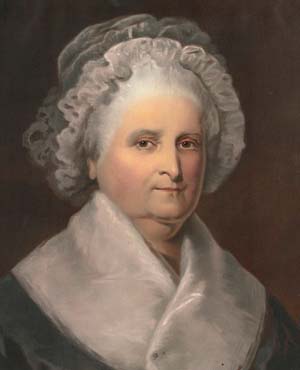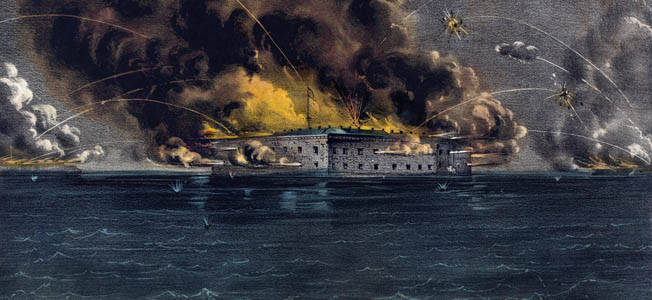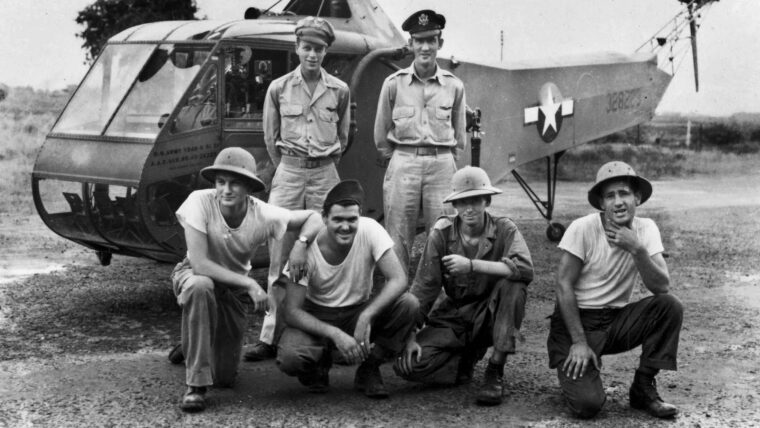
United States
Ford’s Willow Run Factory
By Samantha L. QuigleyThey said it couldn’t be done. Doubters chided Henry Ford for declaring that his Willow Run Bomber Plant could turn out a B-24 Liberator heavy bomber every hour. Read more

United States
They said it couldn’t be done. Doubters chided Henry Ford for declaring that his Willow Run Bomber Plant could turn out a B-24 Liberator heavy bomber every hour. Read more

United States
Martha Custis Washington, wife of General George Washington, came to the winter quarters of her husband’s army each winter of the Revolutionary War. Read more

United States
By Mike Haskew
Union General William T. Sherman was a friend and trusted subordinate of General Ulysses S. Grant, commander of all Union armies in the field during the Civil War. Read more

United States
One of the catalysts for a major rebellion in the United States were irregular warfare in “Bleeding Kansas” from 1854 to 1861 between anti-slavery Free Staters and pro-slavery border ruffians. Read more

United States
An Associated Press report described “a chorus of hisses and boos” that echoed through the chamber when the Congresswoman from Montana cast her vote. Read more

United States
When it came to advanced military technology in World War II, arguably no one was better at it than Nazi Germany, whose scientists Adolf Hitler keep busy trying to invent the ultimate “super weapon” capable of defeating his enemies. Read more

United States
It was nearly 11 on the morning of September 20, 1863, and the woods around slow-moving Chickamauga Creek in northwest Georgia were ominously quiet. Read more

United States
For some Americans, World War II started early. In December 1937, four years before the Japanese attack on Pearl Harbor propelled the United States into the war, Japanese planes attacked an American gunboat, the USS Panay, on China’s Yangtze River, strafing and bombing the boat, sinking it, killing three American crew members, and the wounding 45 others. Read more

United States
On September 14, 1939, Igor Sikorsky attained stability and control with the initial flight of an open cockpit test bed known as the VS-300. Read more

United States
On the morning of October 17, 1859, an aide to Secretary of War John B. Floyd hurried off with an urgent message for Colonel Robert E. Read more

United States
Six months after the attack on Pearl Harbor, Admiral Isoroku Yamamoto, commander of the Combined Fleet of the Imperial Japanese Navy, sought to extend Japan’s defensive perimeter in the central Pacific with the seizure of Midway atoll, about 1,300 miles west of Hawaii. Read more

United States
By 1901, the Small Arms Committee—the body within the War Office tasked with arming the British Army with weapons—sought to replace their then-standard issue rifle: the Magazine Lee-Metford Rifle Mark II. Read more

United States
From an altitude of 30,000 feet, the swift Japanese reconnaissance aircraft flew high over Saipan and Tinian, photographing the brisk and extensive engineering effort under way on the American airfields far below. Read more

United States
The origins of the Universal Bren Gun Carrier can be traced to the Ford T-powered Carden-Loyd machines developed in Great Britain in the mid-1920s, specifically the Mark VI model of 1927. Read more

United States
When it came to weapons production, the Imperial Japanese Army’s requirements often came in second to the needs of the Imperial Japanese Navy. Read more

United States
Few would argue that Daimler-Benz is one of the most prominent and highly regarded motor vehicle manufacturers in automotive history. Read more

United States
The enemy of my enemy is my friend, so an old saying goes. Perhaps it was the grandest exercise in political pragmatism and expediency that the world has ever known. Read more

United States
Although several overzealous Union Army field commanders organized African Americans into ad hoc militia units early in 1862 and several black regiments were mustered into service later that year, it wasn’t until after President Abraham Lincoln’s Emancipation Proclamation took effect on January 1, 1863, that the federal government began actively recruiting and enlisting black soldiers and sailors. Read more

United States
On March 23, 1991, at a reunion of the postwar Nuremberg International Military Tribunal staffers in Washington, I had occasion to meet the former American prosecutor, Brigadier General Telford Taylor. Read more

United States
By the spring of 1945, Hitler’s thousand year Reich had come crashing down in flames. The Allied armies that had landed at Normandy almost one year earlier had penetrated deep inside Germany. Read more